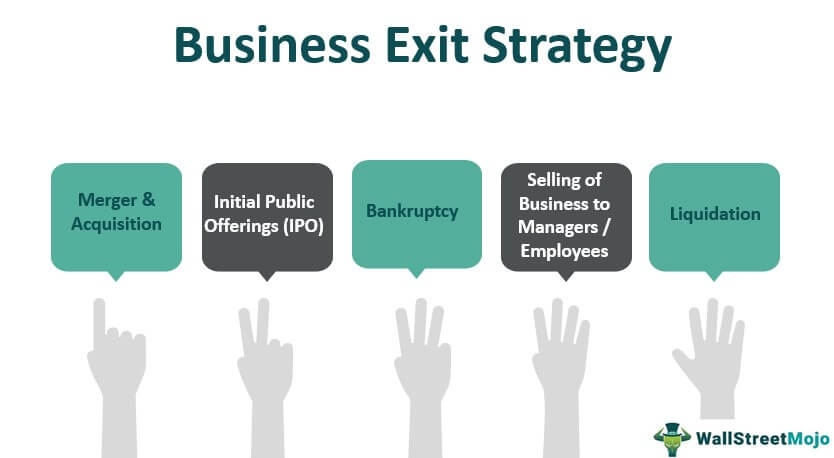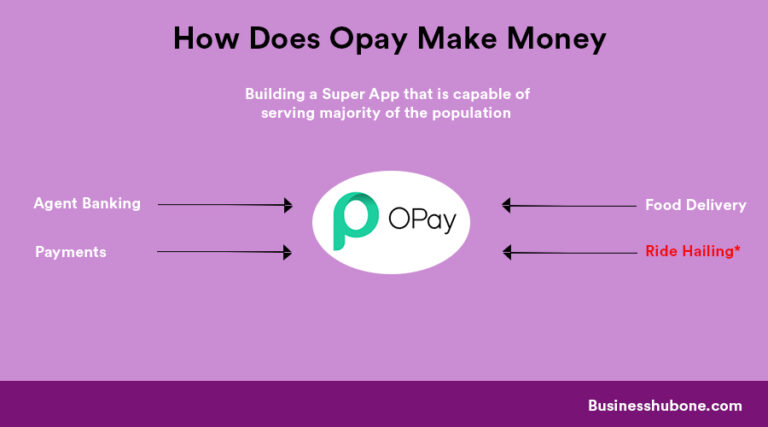Exit Strategies for Startups.
Founders and investors commit to different ventures to provide solutions, achieve a dream, and effect change. When these objectives are fulfilled, exits are the required and diverse exit strategies for startups are deployed.
But what exactly is an exit strategy? Why is it important? What are the various types for startups and investors?
In this article, we delve into the intricacies of startup exit strategies, exploring the ways founders and investors can divest from their ventures. This will be explored as follows:
- What is an exit strategy?
- Importance of having an exit strategy
- Types of exit strategies for startups
- Types of exit strategies for investors

Table of Contents
What is a startup exit strategy?
A startup exit strategy is a plan that the founder or owner of a startup/ business makes to sell part or all of the ownership in their company or shares/stakes to other firms or investors. The goal is to maximize the value of your company before converting it to cash for personal use or in order to invest elsewhere.
Common exit strategies a startup business may explore include: liquidating assets, declaring bankruptcy; this usually means financial losses and are taken up by failing startups; selling to a new owner, a merger and acquisition, taking the company public via an initial public offering; these exit strategies are considered a win for startups because of the potential profits involved.
Exit strategies for startups
As mentioned earlier there are multiple different exit strategies based on need. For example if a company is expanding and could use more funding to grow, an IPO would be a good fit. If the startup wants to prepare for a potential loss in the future, then they may want to consider a buyout, an acquisition or liquidation.

Mergers and Acquisition:
This is a popular startup exit strategy. A merger is a union between the startup and a competitor whose main goal is to join forces to become a new company. Examples of mergers include: a merger in the banking sector which occurred in 2013 between Access bank and Intercontinental bank. Another example would be the merger between Exxon and Mobil in 1998. In each of these examples, the two companies combined to become one entity. An acquisition is when a competitor purchases the startup and takes over it completely.
Take Instagram, for example—a humble photo-sharing app that took the world by storm and captured the attention of social media behemoth Facebook. In 2012, Facebook swooped in with a jaw-dropping $1 billion acquisition offer, propelling Instagram’s founders to instant stardom and solidifying their status as startup legends.
However, when Stripe paid about $200 million for Paystack in 2020, that was an acquisition both entities remained after the investment.

Acquisitions are actually becoming more popular for startups in recent times with a 30% increase in tech-related M & A deals from 2020 to 2021.
Acquisitions happen across sectors and to businesses of different sizes; offering a lucrative exit strategy for startups of all shapes and sizes. From biotech firms securing buyouts from pharmaceutical giants to niche e-commerce players finding a home within retail conglomerates, the acquisition landscape is as diverse as it is dynamic, providing ample opportunities for founders to cash out and move on to their next venture.
Another variation of Acquisitions are Buyouts.
Buyouts:
A buyout occurs when the owner of the business is bought out by business executives, outside investors, or even close friends or family members. Takeovers by firm executives are referred to as management buyouts, or MBOs. A friendly buyout occurs when the owner’s relatives or friends take over. If the startup owners pass away, retire, or for some other reason abandon the company, these tactics might still be effective.
Buyouts could also be achieved by third party buyers who want to take over the company. This may be beneficial for owners who really want to make money by selling the company, but if the startup business is experiencing losses, the negotiations may lead to undesirable buyout offers.
Initial Public Offering (IPO):
Fasten your seatbelts, because we’re about to take a deep dive into the world of initial public offerings (IPOs)—the quintessential rite of passage for startups looking to make a splash on the public markets. An IPO represents a pivotal moment in a startup’s journey, marking its transition from a private entity to a publicly traded company with shares available for purchase by investors far and wide.
An IPO occurs when a company decides to stop operating as a privately owned company and offer stock on any of the world’s public exchanges i.e the New York Stock Exchange (NYSE) which is the largest stock exchange in the world, NASDAQ (for tech IPOS, is the second largest), Tokyo Stock Exchange (TSE), etc.
Consider the case of Google, whose groundbreaking IPO in 2004 catapulted the search engine giant to stratospheric heights and minted a new generation of tech billionaires. With a valuation exceeding $23 billion, Google’s IPO not only provided early investors with a handsome return on their investment but also unleashed a wave of excitement and optimism that reverberated throughout the tech industry.
But while the allure of an IPO may be irresistible, the path to public markets is fraught with challenges and uncertainties. Regulatory hurdles, market volatility, and investor scrutiny are just a few of the obstacles that startups must navigate on their journey to IPO glory, making careful planning and strategic execution essential prerequisites for success. Note however that an IPO means control over the company is no longer in the hands of the founders; instead, company executives will need to operate in a way that keeps shareholders satisfied.

Asset Sales:
An asset sale is a type of transaction in which a company sells off its individual assets, rather than selling the entire business as a going concern. These assets may include tangible assets such as equipment, inventory, and real estate, as well as intangible assets such as patents, trademarks, and intellectual property rights.
Why it is Deployed:
Asset sales are often deployed for strategic reasons, allowing companies to unlock value from specific assets or divisions that may no longer align with their core business objectives. There are several key reasons why a company might choose to pursue an asset sale:
- Streamlining Operations: Companies may use asset sales to streamline their operations by divesting non-core assets or business units that are underperforming or no longer strategic. By focusing on their core competencies, companies can improve efficiency, reduce costs, and enhance overall profitability.
- Raising Capital: Asset sales can be an effective way for companies to raise capital quickly, particularly in situations where traditional financing options may be limited or unavailable. By selling off valuable assets, companies can generate cash to fund growth initiatives, repay debts, or finance strategic investments.
- Exiting Non-Core Markets: Asset sales can enable companies to exit non-core markets or geographies where they no longer wish to operate. This may involve selling off assets associated with a particular product line, business segment, or geographic region that is no longer deemed essential to the company’s long-term strategy.
- Restructuring or Turnaround Efforts: In cases where a company is facing financial distress or undergoing a restructuring or turnaround effort, asset sales can play a critical role in stabilizing the business and positioning it for future success. By selling off underperforming assets or liabilities, companies can improve their financial position and focus on executing a turnaround plan.
Overall, asset sales offer companies a flexible and pragmatic exit strategy that can be tailored to their specific needs and circumstances. Whether it’s unlocking hidden value, raising capital, or streamlining operations, asset sales provide companies with a valuable tool for optimizing their strategic position and maximizing shareholder value.
Let’s examine Yahoo, a once-dominant force in the tech industry that was facing intense competition from rivals like Google and Facebook to the point of being obsolete. In 2017, Yahoo struck a deal with telecommunications giant Verizon, selling off its core internet business for a whopping $4.48 billion—a move that allowed Verizon to bolster its digital media portfolio while providing Yahoo’s beleaguered stakeholders with a lifeline amidst turbulent times.
But asset sales aren’t reserved solely for struggling startups; they can also serve as strategic maneuvers for companies looking to streamline operations, divest non-core assets, or pivot into new markets. Whether it’s selling off patents to unlock hidden value or offloading underperforming divisions to focus on core competencies, asset sales offer a flexible and pragmatic exit strategy for startups navigating the choppy waters of entrepreneurship.

Liquidation – Disposition of assets
Liquidation, in the context of business, refers to the process of winding down a company’s operations, selling off its assets, and distributing the proceeds to creditors and shareholders. It is typically pursued when a company is unable to meet its financial obligations, is in debt and is facing insolvency or bankruptcy.
Reasons for Liquidation:
Here are the probable reasons why a startup might want to consider liquidation as an exit strategy:
- Financial Distress: Companies may opt for liquidation when they are unable to generate sufficient revenue to cover their debts, expenses/running costs and liabilities. This could be due to declining sales, high operating costs, poor investment decisions or mismanagement of funds.
- Insolvency: If a company’s liabilities exceed its assets and it is unable to repay its debts as they become due, it may be deemed insolvent. In such cases, liquidation may be the most viable option to address the company’s financial woes and satisfy its creditors.
- Strategic Decision: In some cases, liquidation may be a strategic decision made by company stakeholders to maximize value for shareholders. This could involve selling off assets to generate cash, paying off debts, and distributing any remaining proceeds to shareholders.
How liquidation can be executed as an exit strategy.
- Appointment of Liquidator: The first step in the liquidation process is typically the appointment of a liquidator, who is responsible for overseeing the winding down of the company’s affairs. The liquidator may be appointed by the company’s board of directors, creditors, or a court of law, depending on the circumstances.
- Asset Valuation and Sale: The liquidator will assess the company’s assets, including property, equipment, inventory, and intellectual property, and determine the best way to maximize their value. This may involve selling assets through auctions, private sales, or negotiations with buyers.
- Payment of Creditors: Once the company’s assets have been sold, the proceeds are used to repay creditors in order of priority. Secured creditors, such as banks or lenders with liens on specific assets, are typically paid first, followed by unsecured creditors, such as suppliers and vendors.
- Distribution to Shareholders: After creditors have been paid, any remaining proceeds are distributed to shareholders in accordance with their ownership interests. However, shareholders are often the last to receive payment in a liquidation, and may not receive anything if there are insufficient funds to cover all debts.
Overall, liquidation is a complex and often challenging process that requires careful planning and execution. While liquidation is typically linked to unfavorable experiences for a company, it is generally regarded as a better option than bankruptcy.
A Time -sensitive exit strategy:
A time-sensitive exit strategy can shield investors’ capital from increasing losses. The investor chooses how long they are willing to stick with investments that are either decreasing or keeping the same. The investor may sell their shares if, after the predetermined period of time, they don’t perform well.
Equity stake sale:
Offering their ownership shares to buyers is one way for investors to exit the market. The investor might leave the firm in return for payment for their ownership interest. Investors in successful or unsuccessful businesses may benefit from this since they can negotiate a sale to reduce losses or cash out when the equity stake is worth more to increase their profits.
Bankruptcy:
It may be necessary for a startup to file for bankruptcy, which is a legal procedure that entails giving up assets in return for debt relief. The founders’ credit may be harmed by filing for bankruptcy, which may make it more difficult for them to obtain financing for other business endeavors.
A declaration of bankruptcy is the last ditch effort a startup can undergo to avoid drowning in debts. At this point there is no profit to be made, just loss/debt management.
Conclusion
In conclusion, regarding startup exit strategies, one thing is abundantly clear: There is no one-size-fits-all approach to cashing out from a startup. From acquisitions and IPOs to asset sales and beyond, founders and early investors must carefully weigh their options, consider their objectives, and chart a course that aligns with their vision for the future.
Therefore, keep this in mind whether you’re an investor looking for a profitable exit or an entrepreneur dreaming of a billion-dollar buyout: the road to startup success is as varied and unpredictable as the entrepreneurs who walk it. But in the dynamic world of entrepreneurship, everything is possible if you have knowledge, vision, and a good dose of boldness.
References
- Five 8 out of 10 reasons why businesses fail- Forbes https://www.google.com/amp/s/www.forbes.com/sites/ericwagner/2013/09/12/five-reasons-8-out-of-10-businesses-fail/amp/
- The importance of having a startup exit strategy- https://blog.hubspot.com/sales/startup-exit-strategy
- Merger and acquisition deals in Nigeria – Stears. https://www.stears.co/premium/article/merger-and-acquisition-deals-in-nigeria-the-abcs/
- Stock exchanges around the world. https://www.investopedia.com/financial-edge/1212/stock-exchanges-around-the-world.aspx#:~:text=The%20largest%20stock%20exchange%20in,and%20the%20Shanghai%20Stock%20Exchange.







